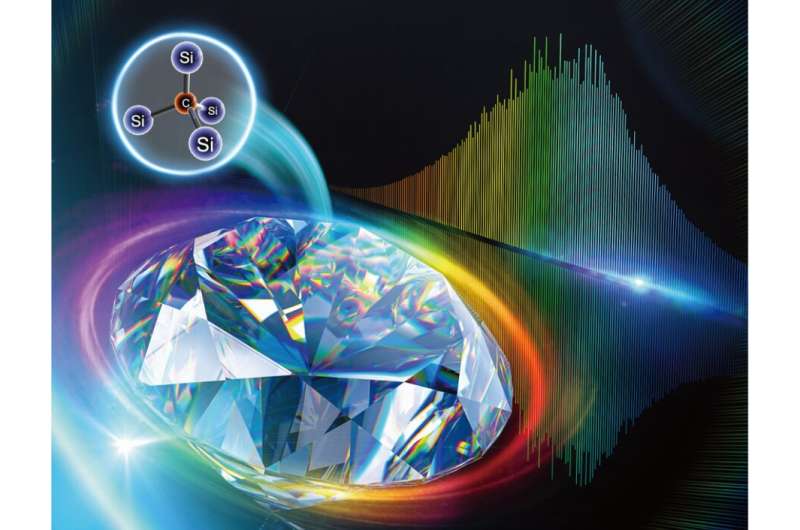Silicon carbide holds promise for integrated photonics

Researchers led by Ou Xin from the Shanghai Institute of Microsystem and Information Technology (SIMIT) of the Chinese Academy of Sciences have recently comprehensively reviewed milestones and challenges in silicon carbide (SiC)-based integrated optics. This review was published in Applied Physics Reviews.
Photonic integrated circuits (PICs) are expected to solve two bottlenecks of transmission bandwidth and processing speed in information technology. However, traditional silicon photonics cannot realize all functions required by information society. As supplements, platforms such as LiNbO3, Si3N4, etc. are explored. Particularly, SiC, benefited from its high refractive index, wide transparency window, high nonlinear coefficient, complementary metal oxide semiconductor (CMOS)-compatibility, etc., is accepted as a promising platform for PICs.
In nonlinear optics, ultra-high Q (highest value 7.1×106) SiC optical resonators, octave-spanning Kerr frequency microcombs and soliton Kerr frequency microcombs at cryogenic temperature have been successively demonstrated in recent three years. In electro-optics, a CMOS-driven microring-based electro-optical modulator operating at high optical density was demonstrated. SiC also receives much attention in quantum optics. It can host single spin defect with bright emission and long spin coherence time. Coherent manipulation of single divacancy spin in 4H-SiC and efficient coupling of silicon vacancy (SiV) to resonators (micro-pillars or PhCs) in 4H-SiCOI have been respectively realized. Furthermore, a cubic lattice site SiV (V2) generated by He+ implantation was integrated into waveguide without deterioration of intrinsic spin-optical properties.
It is clear that SiC photonics is currently booming with tremendous opportunities but also challenges, especially in the preparation of high-quality silicon carbide-on-insulator (SiCOI).
Ou’s group from SIMIT has carried out systematic research on SiCOI-based integrated photonics. In 2019, they fabricated 4-inch 4H-SiCOI of high uniformity for integrated optics by ion-cutting technology and generated a room-temperature coherent controlled spin defect in the 4H-SiC by H+ implantation.
Subsequently, a SiC resonator was fabricated through femtosecond laser-assisted chemical-mechanical polishing method and the optical quality factor was measured to be 7.1×106, which is the highest value in SiC photonics so far.
Owing to the ultrahigh-Q, broadband frequency conversion, cascaded Raman lasing and wide bandwidth Kerr frequency were achieved. In 2022, 4H-SiC photonic chip was integrated with InGaAs quantum dot-based single-photon sources by pick-and-place technique.
By designing bilayer vertical couplers and 1×2 multimode interferometers with a power splitting ratio of 50:50, generation and highly efficient routing of single-photon emission in the hybrid quantum photonic chip were realized.
The group recently aimed to fabricate 4H-SiCOI with low optical loss and to facilitate integrated nonlinear and quantum SiC photonics, especially broadband wide soliton frequency Kerr combs.
In combination with the advances in SiC nonlinear and quantum optics, a broader prospect for SiC integrated optics can be expected. The development of low-cost, wafer-scale and high-quality 4H-SiCOI will drive the development of nonlinear and quantum optics, and even SiC power and radio frequency devices.
A new platform for integrated photonics
Ailun Yi et al, Silicon carbide for integrated photonics, Applied Physics Reviews (2022). DOI: 10.1063/5.0079649
Citation:
Silicon carbide holds promise for integrated photonics (2022, August 31)
retrieved 31 August 2022
from https://phys.org/news/2022-08-silicon-carbide-photonics.html
This document is subject to copyright. Apart from any fair dealing for the purpose of private study or research, no
part may be reproduced without the written permission. The content is provided for information purposes only.
For all the latest Science News Click Here
For the latest news and updates, follow us on Google News.

